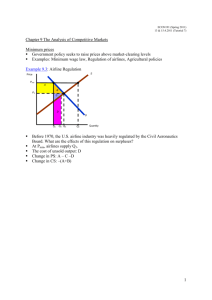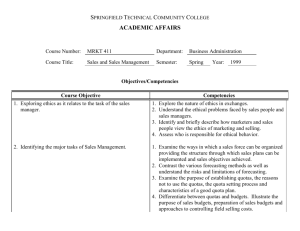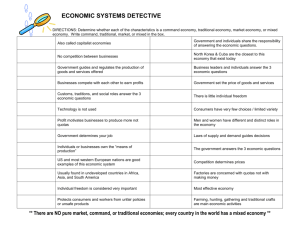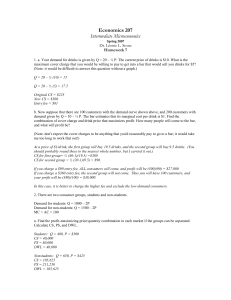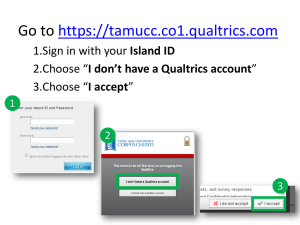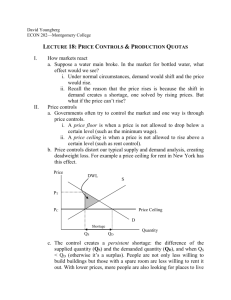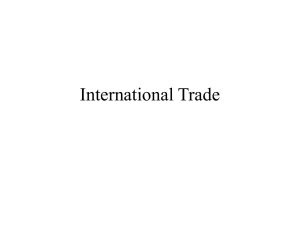Circumventing Antitrust Legislation: Supply Control through Input Restrictions in European PDOs
advertisement
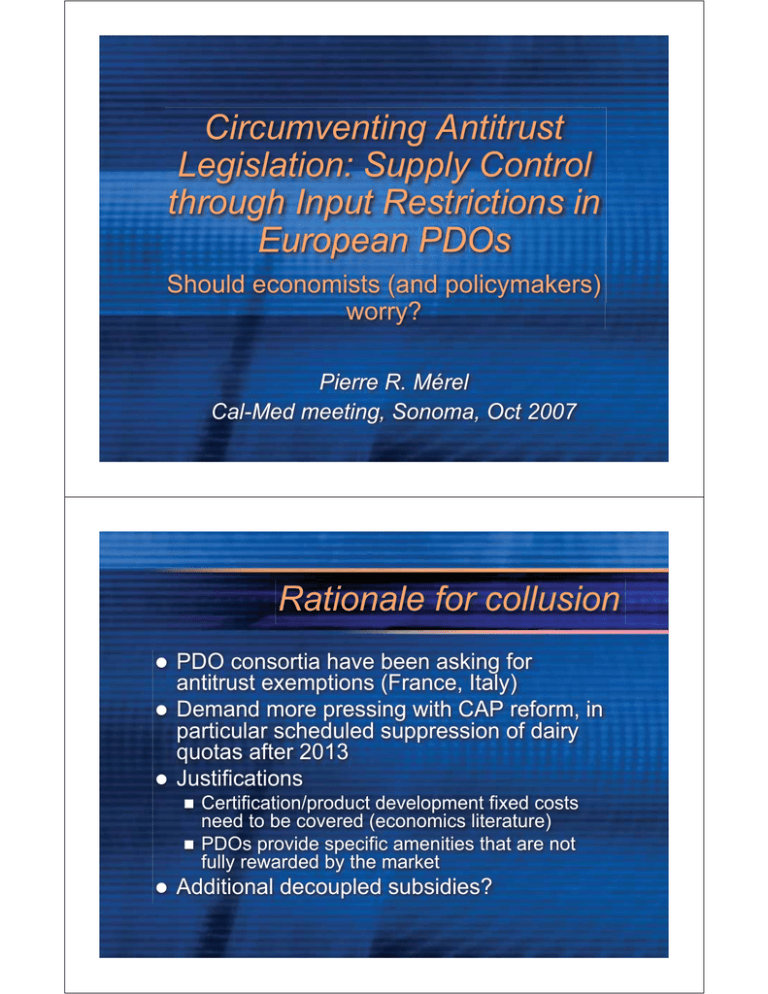
Circumventing Antitrust Legislation: Supply Control through Input Restrictions in European PDOs Should economists (and policymakers) worry? Pierre R. Mérel Cal-Med meeting, Sonoma, Oct 2007 Rationale for collusion PDO consortia have been asking for antitrust exemptions (France, Italy) Demand more pressing with CAP reform, in particular scheduled suppression of dairy quotas after 2013 Justifications Certification/product development fixed costs need to be covered (economics literature) PDOs provide specific amenities that are not fully rewarded by the market Additional decoupled subsidies? Previous literature Marette et al., ERAE 1999, Marette & Crespi, RIO 2003 Lence et al., AJAE 2007 Giraud-Héraud et al., Economie rurale 2003 Policy question 2 options: Extend exemptions within wine CMO to allow for quantity fixing Allow production requirements to include provisions that increase costs and decrease total output Lence et al. (2007) : high costs of allowing collusion on inputs or production requirements (Lence et al.’s hypothesis) Why choose an instrument run by producers themselves? Producers do not like to be administered and want autonomy Fewer administrative costs for regulators Other types of farm support also entail DWL Consumers have a choice (not taxpayers), so it may seem more equitable to ask consumers to pay Difference with minimum quality standards The production restrictions we are considering do not change product quality Primary purpose is to make production more costly to decrease total output in equilibrium In analytical terms, problem comparable to immiserizing growth Theoretical question with important policy implications If we let producers collude on input or production practices, which will be the resulting transfer and more importantly the deadweight loss? How does this DWL compare with that of monopoly pricing? Should antitrust authorities be concerned with such behavior? How do relevant variables influence the size of the DWL? Are some types of inputs more suitable in terms of total DWL to allow for collusion? Analyzing input collusion Input quotas should cover most cases Increasing production cost through production requirements can be recast in terms of input quotas Rent to the restricted input should be included in the optimization program Example 1: land restrictions (already in the legislation though not necessarily binding) Example 2: capacity constraints (Comté) Example 3: limitation in the amount of concentrated feed (purchasing quota) 2 Models Model 1 Muth (1964) Issue: linearity Model 2 Constant-elasticity supply and demand Cobb-Douglas technology CRTS Issue: =1 1st result: small input quotas are profitable The model extends result on output quotas to input quotas Gardner’s result extended to include quasi-rents to the unrestricted input when inputs are complements 2nd result Model 1 and model 2: input quota has a smaller total DWL than output quota Contrast with Lence & al.’s hypothesis If the transfer is enough to cover fixed costs, then the input quota is preferable This is reassuring since controlling input restrictions is more difficult for antitrust authorities than controlling output collusion or price setting Effect of parameters DWL of optimal input quota Increasing in s1 Increasing in 1 Increasing in 2 decreasing in Size of transfer moves the opposite way Contribution so far Structural models with a small set of assumptions Results have direct policy implications: input quotas (through production requirements) may be an interesting tool Managed by producers Small monitoring cost (?) Smaller DWL than output collusion (but transfer smaller as well) Choice of requirements is approved by public authorities who can therefore make ex ante decisions on which input(s) will be subject to collusion To do Can we extend the result to more general production models? Get rid of functional form assumptions while keeping standard convexity properties of the production function


